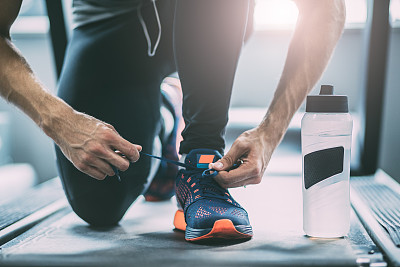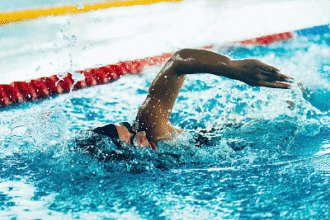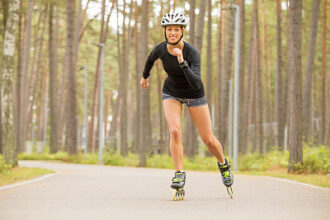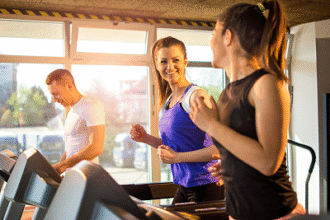Correct Running Form: A Practical, Comfortable Approach
Correct running form is less about forcing a single “ideal” shape and more about finding a relaxed, repeatable posture that lets you move efficiently without strain. The goal is to align the head, trunk, hips, and legs so forces travel cleanly through the body, reducing unnecessary braking and impact while keeping breathing steady. Small adjustments in posture and rhythm can make running feel lighter and more sustainable, especially as duration or speed increases.
Begin with an easy, upright posture and a steady gaze. Keep the head facing forward with the chin neutral, eyes looking ahead to read the terrain without craning the neck. Let the shoulders rest comfortably—avoid hunching or pinching them upward—and allow the chest to feel open so breathing remains unforced. A slight forward lean originating from the ankles (not the waist) often helps the body “fall” into motion, but there is no need to exaggerate the angle. On uneven roads or trails, maintain the same calm alignment and adapt by softening the knees rather than bending at the waist.
Arm swing should feel natural and rhythmic, coordinated with the legs to balance rotation through the trunk. Think of the shoulders as the axis and let the arms move mostly forward and back with a small, comfortable range that stays close to the body’s midline. Keep the elbows loosely bent—roughly around a right angle for many runners—and the hands relaxed, with no clenching. As speed increases, the arm swing can grow a touch quicker and slightly more dynamic, but there is no need to lift the elbows aggressively; smooth control is preferable to forceful pumping.
A stable trunk supports efficient leg motion. Keep the neck long, the ribcage stacked over the pelvis, and the abdomen gently braced without becoming rigid. The spine naturally rotates a little during running, and allowing this subtle rotation helps the arms and legs coordinate without wasted effort. Excessive swaying or bouncing usually signals overstriding or a cadence that is too slow for the chosen pace. A calm, lightly engaged torso helps maintain balance so the hips, knees, and ankles can track cleanly.
The pelvis and hips set the path for the legs. Aim to keep the pelvis level and the waist upright, holding only the amount of muscle tone needed to maintain posture. Avoid stiffening the low back or tucking the pelvis under; both can disrupt stride mechanics. Think of the hips as a hinge that allows the thigh to swing forward in a straight line while the gluteal muscles guide extension behind the body. This forward‑back path limits unnecessary lateral motion that can contribute to knee or hip discomfort over time.
Thigh and knee mechanics benefit from a forward, straight‑line swing. Drive the thigh gently forward rather than lifting the knee high, especially at easy and moderate paces. Let the knee flex naturally under the body during swing and extend smoothly as the foot prepares to land. Lateral movement at the thigh is seldom helpful and can load the knee awkwardly, so picture the leg tracking in line with the direction of travel. As speed rises, knee lift may increase modestly, but it should remain a product of relaxed, quick turnover rather than forced height.
The calf–Achilles complex plays a central role in cushioning and propulsion. Think of the lower leg as a spring that stores and releases energy with each step. On landing, allow the ankle to flex just enough to absorb impact while keeping the calf and Achilles supple, not stiff. From that compressed position, the foot pushes the body forward with a smooth roll through mid‑stance into toe‑off. Avoid aggressive “digging” at the ground or striking far in front of the body, both of which increase braking forces and can strain the ankle or Achilles tendon.
Foot strike should occur close to beneath the body’s center of mass. Many comfortable, efficient runners make initial contact near the midfoot at easy paces, while others contact lightly at the heel or forefoot depending on speed, anatomy, and surface. Rather than aiming for a single mandatory strike pattern, prioritize quiet, quick steps that minimize overstriding. When the foot lands too far ahead of the body, impact and braking forces rise; when it lands closer under the hips, those forces are better absorbed and redirected into forward motion. Let the impact spread across the whole sole as the body passes over the foot, ending in a firm yet smooth push‑off.
Breathing should match effort and remain steady. At comfortable paces, many runners breathe quietly through both nose and mouth without needing to force a pattern. As intensity increases, allow the breath to deepen and quicken naturally. A relaxed ribcage and unclenched shoulders help the diaphragm work efficiently. If breathing becomes ragged while the rest of your form tightens, reduce pace slightly and regain a rhythm you can sustain, then build back as comfort returns.
Cadence and stride length work as a pair. For a given pace, shorter, quicker steps generally reduce braking and lessen vertical oscillation, while excessively long steps can pull the foot too far in front of the body. There is no single best cadence for everyone; instead, aim for a turnover that keeps steps light and positions the landing foot near the hips. As you speed up, cadence will usually rise and stride length will extend modestly; both changes should feel organic rather than forced.
Start and finish each run smoothly. A few minutes of easy jogging or brisk walking at the beginning raises temperature and prepares joints and tissues. At the end, step down to a gentle jog or walk to allow heart rate and breathing to settle. Avoid collapsing into a squat or lying down immediately after stopping; staying upright supports venous return and comfort. Drink according to thirst with small, regular sips, and refuel if the session was long or intense.
Finally, adapt your form to your body and the terrain. Choose stable surfaces and shoes that match your stride and distance. Increase volume and speed gradually so tendons, bones, and the cardiovascular system adapt together. If you notice chest discomfort, unusual breathlessness, lightheadedness, or joint pain that alters your gait, stop and seek professional guidance. Good form is ultimately the result of relaxed attention: keep your posture tall, your steps light and close to the body, and your breathing steady. With repetition, these cues become automatic, making running feel easier, safer, and more enjoyable over time.







